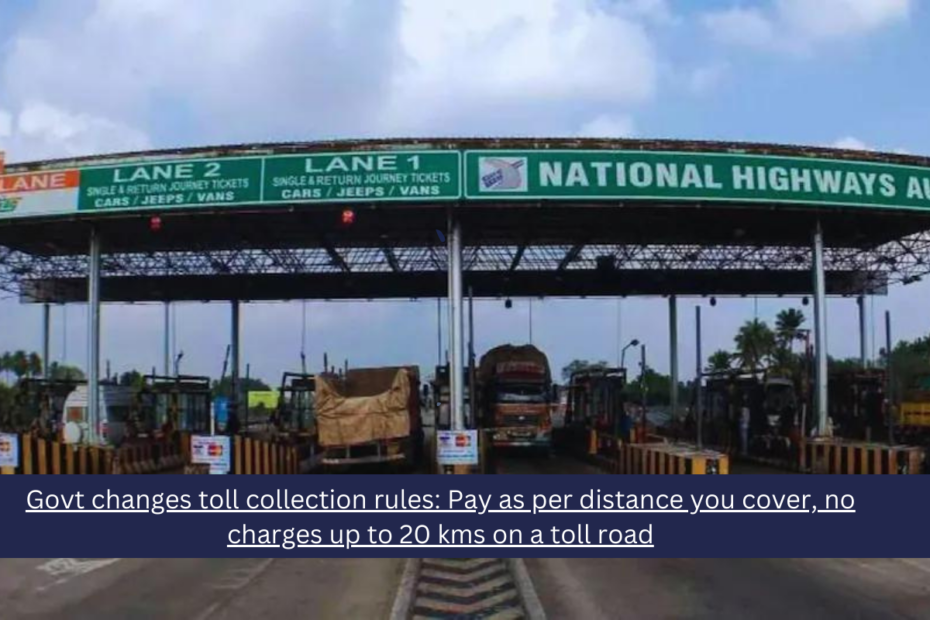Govt changes toll collection rules: Pay as per distance you cover, no charges up to 20 kms on a toll road:New regulations issued by the Indian government will alter the manner that vehicles pay tolls on national highways. With the new system, users of mechanical vehicles (not those with a National Permit) will be able to go up to 20 kilometers for free. The tracking of the system uses the Global Navigation Satellite System (GNSS).
According to the new rules, travels on toll roads, which include national highways, permanent bridges, bypasses, and tunnels, lasting up to 20 kilometers in either direction, will now be subject to a zero-user cost for drivers, owners, or persons in control of cars. Drivers will be billed according to the actual distance traveled for trips that go beyond this cap.
Additional modifications to the regulations now cover the use of many technologies, including as FASTag systems, Automatic Number Plate Recognition (ANPR) devices, and Global Navigation Satellite System (GNSS) On-Board Units. According to the revised legislation, various technical methods alone or in conjunction with them may be used to collect user fees.
A GNSS device is defined as a technology that is permanently installed in cars and is non-transferable. It links to the GNSS in order to collect user fees.
In order to optimize the fee collecting procedure, the regulations stipulate that automobiles fitted with GNSS On-Board Units may be assigned a dedicated lane. If a vehicle enters this lane without a working device, it will be charged twice the normal user fee that applies at that toll plaza.
FASTag versus GNSS
Virtual toll booths are introduced along roads and highways by GNSS technology, in contrast to the current FASTag system, which depends on real toll booths for vehicle monitoring and charging. For GNSS-enabled automobiles only, these virtual booths track a vehicle’s location and distance while recording vital details about it, like its type, registration number, and bank account information.
Crucially, commuters will be able to easily switch from FASTags to GNSS technology since the GNSS system will work with the current FASTag system. Even though FASTag has sped up the toll collection process, lines still form during peak traffic hours. GNSS seeks to solve this problem by guaranteeing a hassle-free and seamless journey.
ALSO SEE:5 morning drinks to burn belly fat fast
At toll plazas, dedicated GNSS lanes will be installed to allow uninterrupted traffic flow for vehicles having GNSS-based ETC. All lanes are anticipated to eventually convert to GNSS-enabled lanes as GNSS-based ETC use increases, bringing in a new era of convenient and efficient toll collecting.
The advantages of toll collection based on GNSS
With the implementation of the GNSS-based ETC system, journey time will be minimized as average waiting periods will be cut from 714 seconds to just 47 seconds, greatly improving operating efficiency.
By taking this proactive measure, traffic congestion will be reduced and a regular flow of vehicles will be ensured without the need for additional toll lanes. In addition, the removal of physical toll booths will simplify invoicing since customers will only be charged for the actual distance they travel, which will ultimately result in cost savings from toll booth construction and maintenance.
